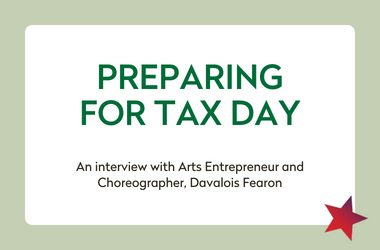Finding the Right Grant Funders for You: Essential Tips
Grant writing means finding the right grant funders for your organization
Getting started with grant writing (or Institutional Development) is a daunting process, but it’s necessary in order to achieve long-term financial stability for your organization and your projects. The key is to cultivate relationships with foundations whose missions and priorities are aligned with your own. The first step in this process is to research who those funders are.
Who is already funding organizations like yours with grants?
There are thousands of private foundations out there, as well as hundreds of government funding agencies and corporate giving programs. Where to start? Our advice is to begin by looking at funders who fund organizations similar to yours. Look to peer organizations in your area who do similar types of programs or projects to yours. Often they will list their funders on their website. Go to their support page, or donation page and scroll down to see a list of their big funders. You can also sign up for their email lists. Often foundations require their grantees to publicly cite them on any communications they send out. Often you will find them listed at the very bottom of eblasts, in small type, or as a bunch of foundation logos. Take note of all of the names you find on a spreadsheet.
How can you find out more about these funders and their grants?
Once you have done a little research into who is funding organizations just like yours, it’s time to find out more about these foundations. The most comprehensive database about institutional funders is the Foundation Directory Online managed by the Foundation Center. The database is free to use at the Foundation Center library in Manhattan, or at some public libraries (ask at your local branch to see if they have a subscription). Otherwise, it costs $50 per month at the most basic level to have access to their full foundation profiles. It might be worth getting a one-month subscription and doing all your grant research at once. If you don’t have the time or resources for that, here are a few other foundation research hacks:
- Google the foundation – if they have a website, then you will probably find all the information you need including their funding priorities, application process and deadlines, and contact information.
- Look up their IRS 990 tax form on a free website like Guidestar.org. Foundations are nonprofit organizations like you, and their financial activity is reported to the IRS annually and available to the public. Read through their most recent 990 to find out who their board members are, their address, who they funded in the past year, and what their application guidelines are. All of this information is embedded in the 990 if you look for it.
- Ask your board members, advisors, and friends about any foundations they know of or have connections to. This is the most direct way to get into a foundation’s giving stream.
While you are researching, take note of the following information about each funder on your spreadsheet:
- Name of the institution
- What action step you should take next: e.g., email a letter of introduction or inquiry
- Type of institution: e.g., family foundation, foundation, government, corporation, or regrant
- Funder history: new or renewal
- Proposal deadline (this will either be listed or be rolling)
- Proposal month (usually the month leading up to the deadline)
- Type of request: e.g., General Operating Support (GOS) or Program/Project support
- Type of Proposal required: e.g., letter of Inquiry, online application, email
- Notes on the funder’s mission, current funding priorities, or points of intersection you want to highlight in your proposal.
- Similar institutions funded (list any peer organizations the foundation has funded in the past)
- Funder contact information, including specific staff or board name, title, email, phone #, mailing address, and website
- Funder board list; this is helpful to run by your own board and advisors to see if anyone has a connection to this funder
What are the next steps for getting grant funding from these institutions?
Sometimes, when researching funders you will find that they give to “preselected organizations only” or by “invitation only.” This doesn’t mean that they won’t give to your organization, just that it will take extra work to get onto their funding roster. First look at their board of directors and staff and see if you or anyone on your board knows someone there. If you don’t have any connections, then write a brief email or letter of introduction to them, sharing information about your organization, and why you think you would be a good fit with the funder’s giving priorities. Keep the funder abreast of your news and announcements, and invite them to your events and performances. Over time you can cultivate a relationship with this funder and may eventually be invited to apply.
Once you have compiled your spreadsheet, you have a calendar of deadlines and are ready to start sending out proposals!
Learn more about How to Write Your First Grant here.
NEXTSTEPS GUEST WRITER: ANNA BRADY MARCUS | 1.08.21
Anna Brady Marcus is a grant-writer specializing in institutional development for the nonprofit performing arts sector.
Latest Blog Posts
Creatives & Credit
Creatives & Credit: A Credit Score WorkshopRecorded on May 4th 2022 Pentacle Presents FREE Creatives & Credit Workshop with Tierra Bonds For artists and creatives looking to build good money habits, this fiscal session teaches you how to reach your credit...
Preparing for Tax Day
Preparing for Tax DayAn interview with Davalois Fearon In preparation for Tax Day, we talked with Davalois Fearon about her experience working with Pentacle, and how it has helped her with her taxes and gain overall financial health, especially through Fiscal...
Planning A Fundraising Event
Planning A Fundraising EventEvent fundraising can be a great way to raise funds There are a number of ways to fundraise money for an organization or cause. One of the most collaborative ways to fundraise is by hosting an event. There are many steps to consider when...



